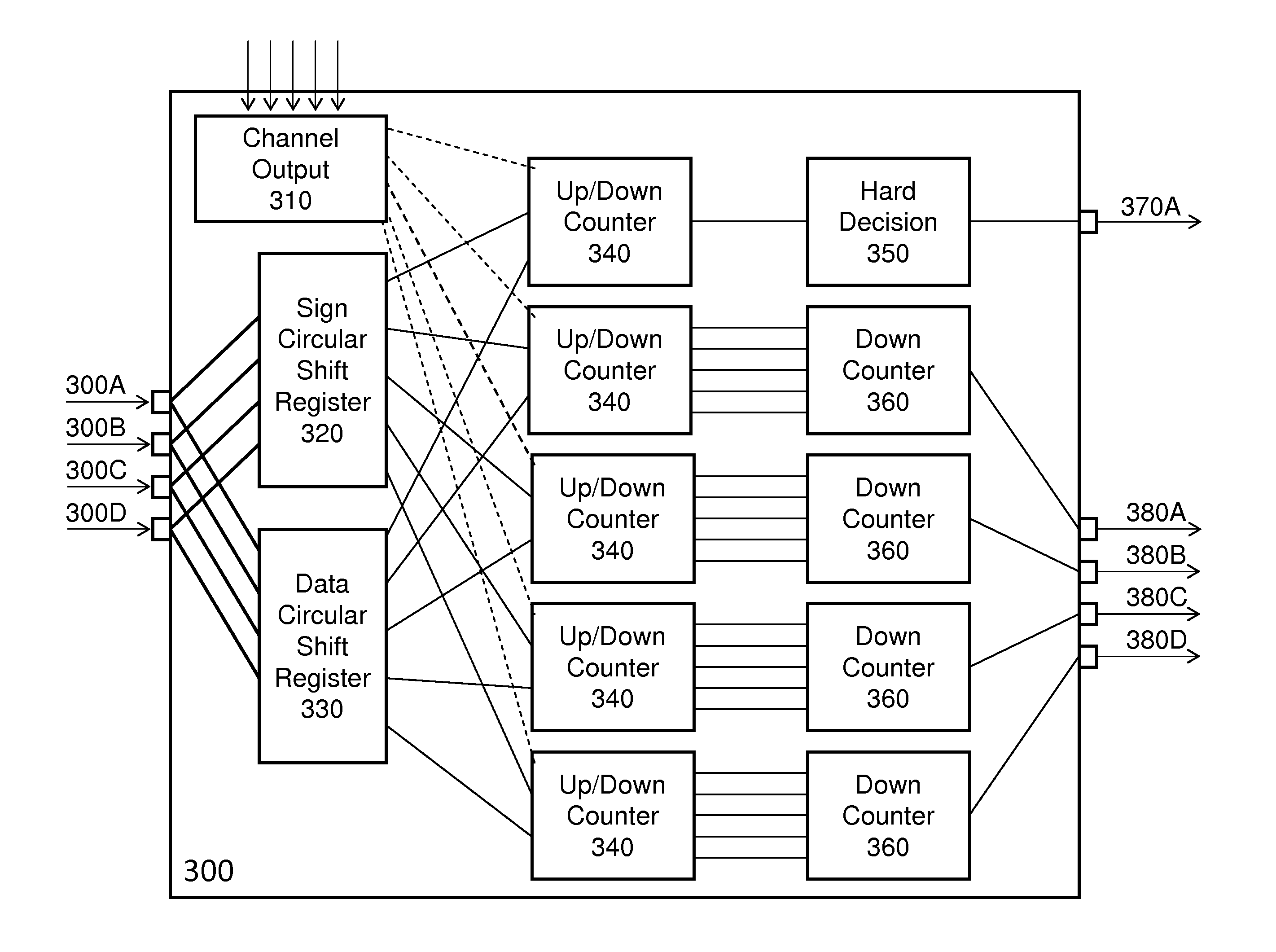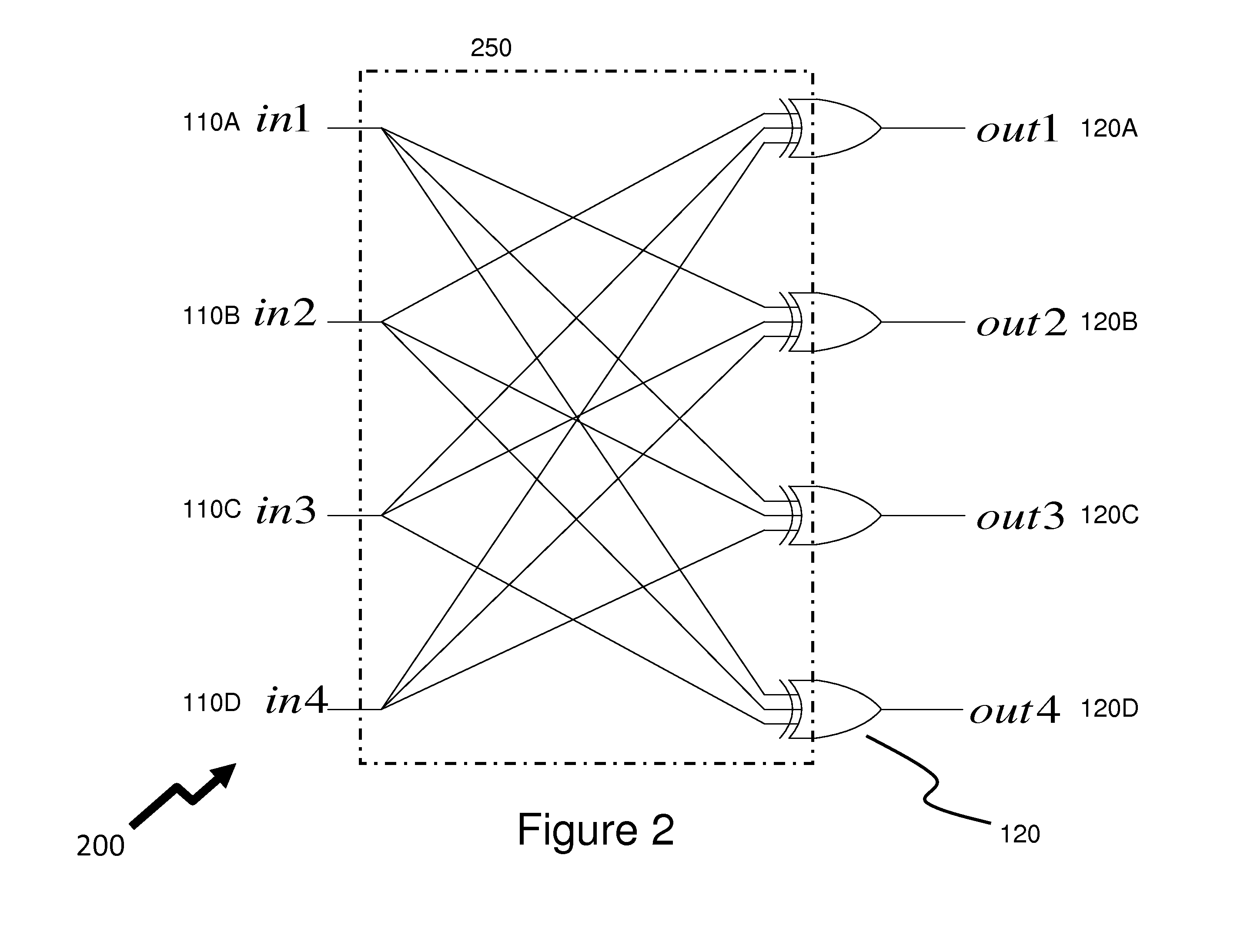Method and system for decoding
a low density parity and code technology, applied in the field can solve the problems of increasing complexity of required decoding, increasing complexity of code length, and little attention devoted, so as to improve the performance of error correction decoding and increase complexity
- Summary
- Abstract
- Description
- Claims
- Application Information
AI Technical Summary
Benefits of technology
Problems solved by technology
Method used
Image
Examples
Embodiment Construction
[0062]The present inventions are directed to decoders for decoding error correction codes and in particular to methods and systems of decoding that mitigate disadvantages of the prior art. Within the description of the different techniques presented below reference is made primarily to LDPC codes. However, other code formats, including but not limited to Polar Codes may also benefit from these techniques and accordingly the inventive steps and embodiments of the invention should be accorded the widest possible scope.
[0063]Within the following description reference may be made below to specific elements, numbered in accordance with the attached figures. The discussion below should be taken to be exemplary in nature, and not as limiting the scope of the present invention. The scope of the present invention is defined in the claims, and should not be considered as limited by the implementation details described below, which as one skilled in the art will appreciate, can be modified by ...
PUM
 Login to View More
Login to View More Abstract
Description
Claims
Application Information
 Login to View More
Login to View More - R&D
- Intellectual Property
- Life Sciences
- Materials
- Tech Scout
- Unparalleled Data Quality
- Higher Quality Content
- 60% Fewer Hallucinations
Browse by: Latest US Patents, China's latest patents, Technical Efficacy Thesaurus, Application Domain, Technology Topic, Popular Technical Reports.
© 2025 PatSnap. All rights reserved.Legal|Privacy policy|Modern Slavery Act Transparency Statement|Sitemap|About US| Contact US: help@patsnap.com



